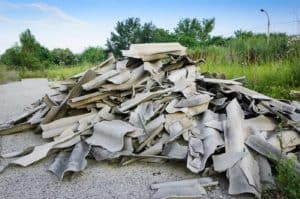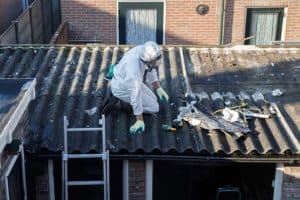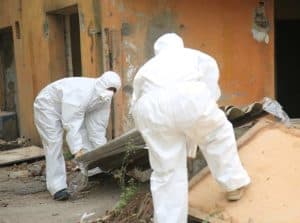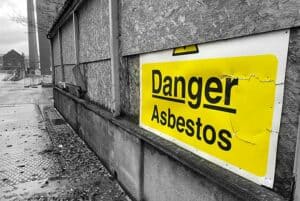Asbestos is a naturally occurring fiber that was used for various purposes up until the 1990s. Asbestos was used in buildings for insulation purposes, which was used in walls, ceilings, and flooring.
Asbestos was then banned in the UK due to health risks established with exposure to asbestos fibres. Breathing in asbestos can cause serious health conditions such as lung cancer, asbestosis, scarring of the lung lining, and other respiratory diseases.
How Do You Manage Asbestos In Older Buildings?
As asbestos was used heavily between the 1930s to the 1990s, finding asbestos in older and historic buildings is pretty common.
If asbestos is managed correctly and is in good condition, it isn’t usually an issue. On the other hand, asbestos is extremely dangerous when the fibers have deteriorated or have become airborne.
If asbestos is in bad condition, which could likely cause a future issue, it should be removed immediately. You should hire a qualified asbestos surveyor to conduct a thorough survey of the building.
What Do You Do When You Have Asbestos In a Building?
Once you have a completed asbestos survey, which will identify the location, type, and condition of the asbestos, there will be a risk assessment to evaluate the potential for asbestos exposure. This will help identify the areas that require immediate attention, allowing the contractors to prioritise immediate areas for removal.
An asbestos management plan is then created to manage the risk from asbestos-containing materials (ACMs) in the building. The goal of the asbestos management plan is to ensure it’s in control, monitoring, and the safe handling of asbestos.
What’s Involved Within an Asbestos Management Plan?
The main objectives and goals of asbestos management plan may include:
Health and Safety
- The health and safety of building occupants is the most important factor when working with asbestos
- Minimising the risk of exposure to asbestos fibers
Law Guidance
- Ensuring compliance with all laws, guidelines, and regulations
- Following COSHH regulations (hazardous to health regulations)
Reducing Risk
- Wearing the correct PPE such as overalls, head cover, and gloves when entering the building
- Limiting the time spent in exposed areas
Long-Term Planning
- Annual inspection checks of known areas that have had exposure to asbestos
- Identify changes around the materials around the asbestos which may pose a risk
These are only a few of the factors included in an asbestos management plan. Our asbestos removal specialists can issue a full detailed plan, following your asbestos survey.
Why Was Asbestos Used In The Past?
According to RBAsbestos, around 5000 deaths are linked to asbestos per year. If this is the case, why was asbestos used in so many buildings?
There are many reasons why asbestos was used in the UK. Asbestos is a great sound and heat insulator that is cheap, strong, water resistant, and electricity resistant.
These factors are why asbestos became so popular across the construction industry in the UK.
In the 1920s, over 20 tonnes of asbestos was imported into the UK annually which then grew to over 170,000 tonnes being imported between the 1950s and 1970s. Blue and brown asbestos wasn’t legally banned in the UK until 1985 and the manufacture of all asbestos products was banned in 1999.
With an estimation of 5,000 asbestos-related deaths each year, it’s the most common killer among construction workers.
Conclusion
In conclusion, asbestos is an extremely dangerous substance. Asbestos disposal, removal, and collection should be dealt with by professional contractors to ensure the risk of inhaling asbestos fibers is minimised.
We are the leading asbestos removal specialists in Bristol. For more information on our asbestos removal service in Bristol, Bath, Swindon, and Wiltshire please contact us.





